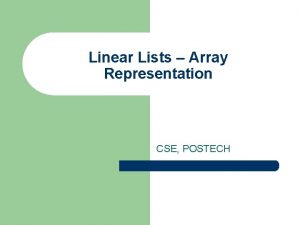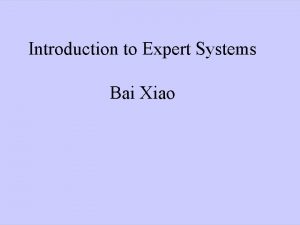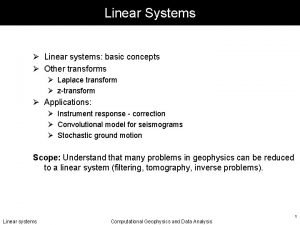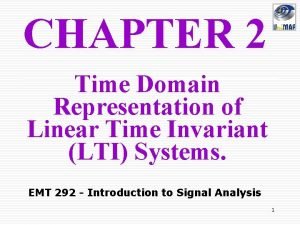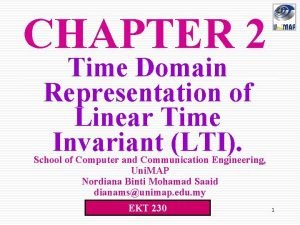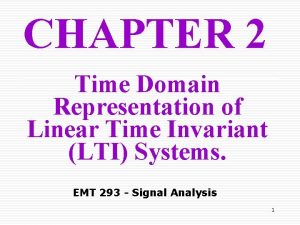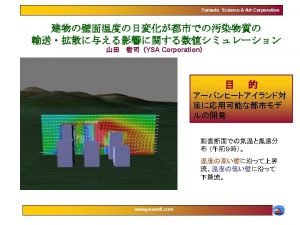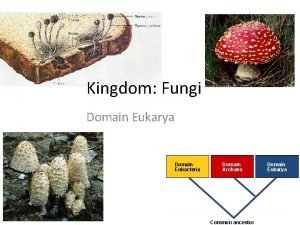CHAPTER 2 Time Domain Representation of Linear Time






![2. 3 Convolution Sum. þ x[n] is a signal as a weighted sum of 2. 3 Convolution Sum. þ x[n] is a signal as a weighted sum of](https://slidetodoc.com/presentation_image_h/25d20bfde378f51e64b8960bd029b6b6/image-7.jpg)
![Cont’d… Figure 2. 1: Graphical example illustrating the representation of a signal x[n] as Cont’d… Figure 2. 1: Graphical example illustrating the representation of a signal x[n] as](https://slidetodoc.com/presentation_image_h/25d20bfde378f51e64b8960bd029b6b6/image-8.jpg)

![Example 2. 1: Convolution Sum. For the figure below, compute the convolution, y[n]. Figure Example 2. 1: Convolution Sum. For the figure below, compute the convolution, y[n]. Figure](https://slidetodoc.com/presentation_image_h/25d20bfde378f51e64b8960bd029b6b6/image-10.jpg)
![Solution: ý. Figure 2. 2 b: The decomposition of the input x[n] into a Solution: ý. Figure 2. 2 b: The decomposition of the input x[n] into a](https://slidetodoc.com/presentation_image_h/25d20bfde378f51e64b8960bd029b6b6/image-11.jpg)

- Slides: 12

CHAPTER 2 Time Domain Representation of Linear Time Invariant (LTI). EKT 230 1

2. 0 Time Domain Representation of Linear Time Invariant (LTI) System. 2. 1 2. 2 2. 3 Introduction. LTI System Properties. Convolution Sum. 2

2. 1 Introduction. Learning Outcome: Examine several methods for describing the relationship between the input and the output signals of LTI system. (1) Impulse Response. (2) Linear Constant-Coefficient Differential. (3) Block Diagram. In signal processing, the impulse response, or impulse response function (IRF), of a dynamic system is its output when presented with a brief input signal, called an impulse 3

2. 2 LTI System Properties. þ If we know the response of the LTI system to some inputs, we actually know the response to many input. (1) Commutative Property. 4

Cont’d… (2) Distributive Property. 5

Cont’d… (3) Associative Property. 6
![2 3 Convolution Sum þ xn is a signal as a weighted sum of 2. 3 Convolution Sum. þ x[n] is a signal as a weighted sum of](https://slidetodoc.com/presentation_image_h/25d20bfde378f51e64b8960bd029b6b6/image-7.jpg)
2. 3 Convolution Sum. þ x[n] is a signal as a weighted sum of basis function; time-shift version of the unit impulse signal. x[k] represents a specific value of the signal x[n] at time k. þ The output of the LTI system y[n] is given by a weighted sum of time-shifted impulse response. h[n] is the impulse response of LTI system H. þ The convolution of two discrete-time signals y[n ] and h[n] is denoted as 7
![Contd Figure 2 1 Graphical example illustrating the representation of a signal xn as Cont’d… Figure 2. 1: Graphical example illustrating the representation of a signal x[n] as](https://slidetodoc.com/presentation_image_h/25d20bfde378f51e64b8960bd029b6b6/image-8.jpg)
Cont’d… Figure 2. 1: Graphical example illustrating the representation of a signal x[n] as a weighted sum of time-shifted impulses. 8

Cont’d… Steps for Convolution Computation. Step 1: Plot x and h versus k since the convolution sum is on k. 1 Step 2: 2 Flip h[k] around the vertical axis to obtain h [- k]. Step 3: 3 Shift h [-k] by n to obtain h [n- k]. Step 4: 4 Multiply to obtain x[k] h[n- k]. Step 5: 5 Sum on k to compute Step 6: 6 Index n and repeat Step 3 -6. 9
![Example 2 1 Convolution Sum For the figure below compute the convolution yn Figure Example 2. 1: Convolution Sum. For the figure below, compute the convolution, y[n]. Figure](https://slidetodoc.com/presentation_image_h/25d20bfde378f51e64b8960bd029b6b6/image-10.jpg)
Example 2. 1: Convolution Sum. For the figure below, compute the convolution, y[n]. Figure 2. 2 a: Illustration of the convolution sum. (a) LTI system with impulse response h[n] and input x[n], producing y[n] and yet to be determined. 10
![Solution ý Figure 2 2 b The decomposition of the input xn into a Solution: ý. Figure 2. 2 b: The decomposition of the input x[n] into a](https://slidetodoc.com/presentation_image_h/25d20bfde378f51e64b8960bd029b6b6/image-11.jpg)
Solution: ý. Figure 2. 2 b: The decomposition of the input x[n] into a weighted sum of timeshifted impulses results in an output y[n] given by a weighted sum of time 11 shifted impulse responses.

2. 3. 1 Convolution Sum Evaluation Procedure. þ An alternative approach to evaluating the convolution sum. þ Recall, the Convolution Sum is expressed as; define an intermediate signal as; so, þ Time shift n determines the time at which we evaluated the output of the system. þ The above formula is the simplified version of Convolution Sum, 12 where we need to determine one signal wn[k] each time.
 What is time domain and frequency domain
What is time domain and frequency domain Linear list representation
Linear list representation Linear list representation
Linear list representation Representation of linear array in data structure
Representation of linear array in data structure Codomain vs domain
Codomain vs domain Z domain to frequency domain
Z domain to frequency domain Z transform
Z transform Table of z transforms
Table of z transforms Domain specific vs domain general
Domain specific vs domain general Domain specific vs domain general
Domain specific vs domain general Problem domain vs knowledge domain
Problem domain vs knowledge domain S domain to z domain
S domain to z domain Compiler bridges the semantic gap between which domains?
Compiler bridges the semantic gap between which domains?


